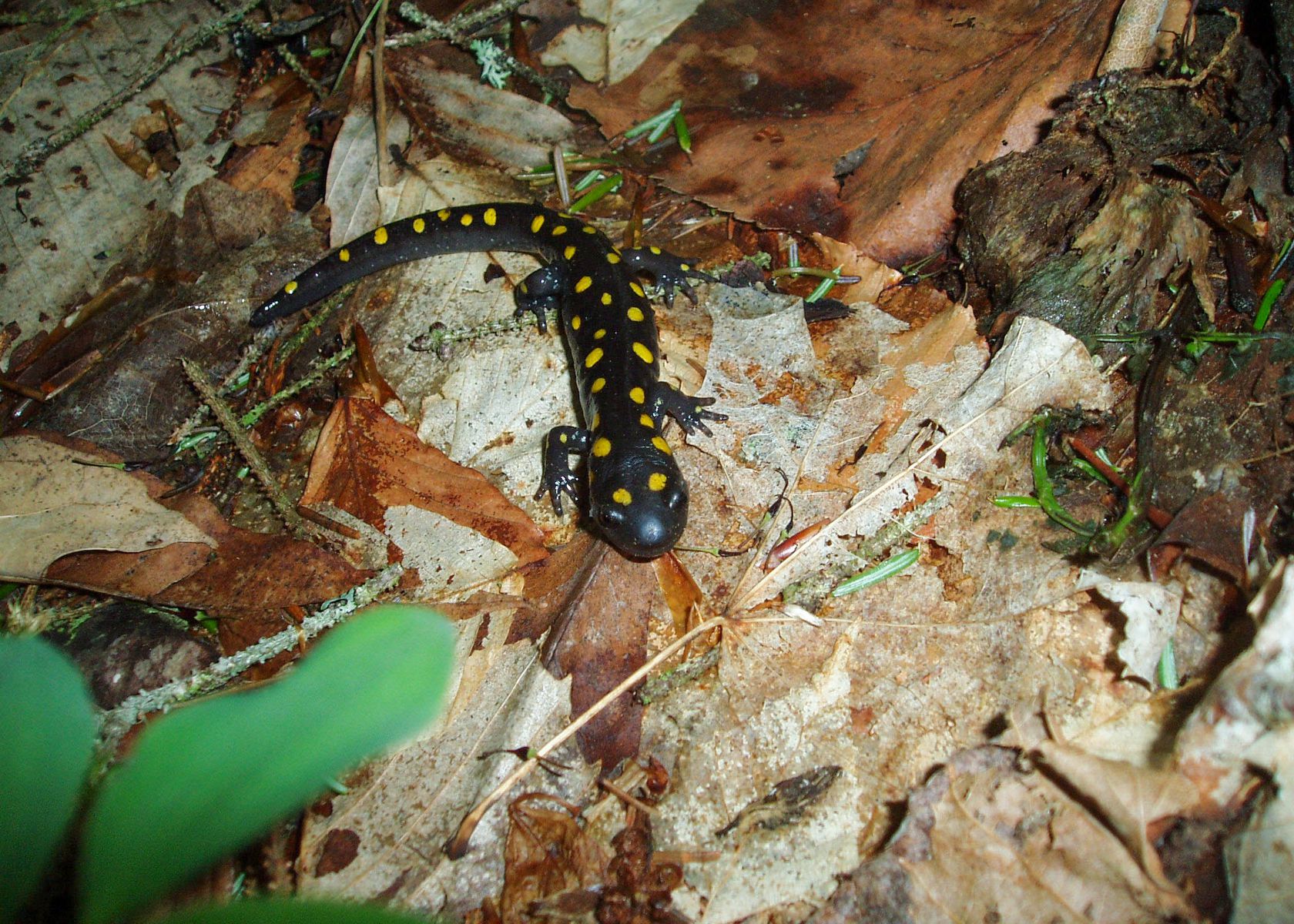Here we are, it’s March! You made it through the cold dark winter! The days are getting longer, the sunlight is feeling warmer, and maybe this year more than ever, many of us are feeling the push to move more, get outside, feel that sun on our faces. To be sure, there will be one more snowy day that will surprise us – and is it really a surprise when it happens every year? – but the idea that winter is behind us lifts our human spirits.
The wildlife around us are feeling it too; they are awakening from their winter hide-aways and are starting to move around, looking for food and mates. The extra daylight, warmer ground temperatures and spring rains trigger movement for a special group of animals that use temporary vernal pool habitat to complete their life cycles. If you hear the high-pitched call of the spring peepers, or the quacking sound of a wood frog chorus, chances are you are near a vernal pool.

What is a vernal pool? Vernal pools are seasonal bodies of water that form only in the spring in shallow depressions that occur throughout the glaciated region of eastern North America, including the Great Lakes and New England. One key factor that separates vernal pools from any old puddle that we see in the spring as snow melts, groundwater rises and rain collects in low places is the lack of an outlet or connection to running water, such as a stream, brook or creek. This specific difference allows for a special habitat that lacks fish, where certain amphibians, insects and other invertebrates can lay their eggs and complete a portion of their life cycle. The other important factor in identifying a vernal pool is that while they may stay on the landscape for at least two months, vernal pools are generally ephemeral, or temporary, so as spring rains pass and temperatures rise, the pool will disappear. This drying also prevents fish from establishing permanent populations. You may walk by a vernal pool on your summer day hikes and not notice this very special habitat.
Vernal pools vary in size and can be surrounded by wetlands, swamps or dry land, depending on where they sit in the regional landscape. In some cases, deeper sections can look like a pond and have vegetation reflective of that such as water lilies or grasses, while others may be only a few inches deep and have a layer of leaves or moss at the bottom. While they are most often found in forested areas, they can also occur in fields or roadsides. Some pools can fill in the autumn or winter and remain ice-covered until the magical combination of spring weather allows for ice to thaw and the organisms to come out, while others remain dry through summer, fall and winter and are only apparent in the spring.

Why are vernal pools protected? One reason is because the unique set of species that depend on these pools cannot exist anywhere else, and they in turn play a role in the ecological life cycle that supports all life on this planet. Vernal pools are considered a type of wetland or water body, and in New England, are regulated and protected at the federal level by the US Army Corps of Engineers. Each state also has regulations specific to vernal pool identification and protection, and in Maine and Massachusetts, mapping and recordation as well. In New Hampshire, vernal pools are regulated and protected per the state wetland rules Env-Wt and are defined under Chapter 100. Vernal pool identification is based on physical factors as well as the primary and secondary indicators, which are specific species that only use vernal pools as habitat.
Vernal pools come to life in different times of year within New England, as early as late February along the Rhode Island and Connecticut coasts, while upper Vermont and Maine will not see vernal pool activity until mid-April. Here in New Hampshire, we start to see amphibian migration on warm rainy nights starting in late March and extending through late May.

Vernal pool organisms also rely on the undisturbed upland surrounding the pool, what is often called the pool envelope. Vernal pool amphibians spend most of the year in the upland discretely feeding, hibernating, and preparing to breed in the spring. Protection of uplands around vernal pools from development or alteration is an important part of the regulatory and permitting process, which is why identifying vernal pools during the correct time of year is an important part of planning for any development type of project, including not only residential and commercial development, but also infrastructure projects such as roads and bridges.
Hoyle, Tanner’s Certified Wetland Scientist, Joanne Theriault, has the training and experience to investigate your site for vernal pools – and given the length of time spent indoors this winter assisting her children with remote learning, she is eager to get outdoors again! Reach out to her with questions!










